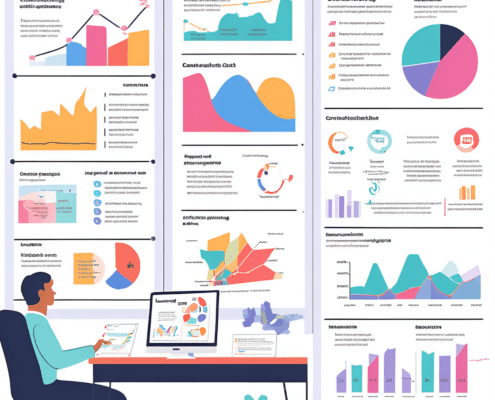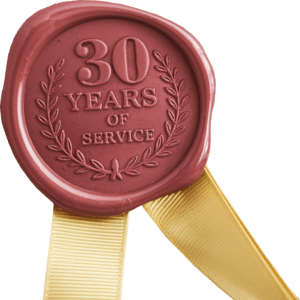Integrating CRM with Existing Systems: Best Practices and Pitfalls
Let’s explore how you can effectively merge your CRM with existing systems while skilfully navigating potential obstacles.
Integrating a new Customer Relationship Management (CRM) system with your existing business applications is no small feat. It’s a pivotal move that can propel your business towards seamless operations and enhanced customer experiences. Yet, the process can be complex, riddled with challenges that can trip up even the most prepared organisations. For organisations in Australia, understanding the best practices and being aware of common pitfalls can spell the difference between a triumphant integration and an expensive setback.
The Importance of CRM Integration
Bringing your CRM into harmony with other business systems—like enterprise resource planning (ERP), marketing automation tools, and customer service platforms—creates a unified ecosystem that’s greater than the sum of its parts. This integration:
- Enhances Data Accuracy: By synchronising data across platforms, you eliminate duplicate entries and reduce errors.
- Improves Efficiency: Automating processes and cutting down on manual tasks streamlines workflows significantly.
- Provides Holistic Insights: A full view of customer interactions empowers better decision-making.
Best Practices for Successful CRM Integration
- Assess Your Current Systems
Before starting integration, take a step back to thoroughly assess your existing IT infrastructure.
- Inventory Your Applications: Compile a comprehensive list of all systems that need to interact with the CRM.
- Evaluate Compatibility: Identify potential conflicts or limitations in data formats, protocols, or system capabilities.
- Define Clear Objectives
Know what you’re aiming for before you begin.
- Set Measurable Goals: Whether it’s boosting sales efficiency or enhancing customer service, establish clear, quantifiable targets.
- Align with Business Strategy: Ensure the integration supports and advances your overarching business objectives.
- Choose the Right Integration Method
Select an approach that aligns with your technical environment and organisational goals.
- Use APIs: Leverage Application Programming Interfaces for direct communication between systems.
- Implement Middleware: Consider middleware solutions that act as intermediaries to facilitate data exchange seamlessly.
- Custom Development: If off-the-shelf solutions don’t fit the bill, bespoke integration may be necessary.
- Ensure Data Compatibility and Quality
Data is the lifeblood of any CRM system, so its integrity is paramount.
- Standardise Data Formats: Make sure all systems use compatible data structures to avoid discrepancies.
- Cleanse Data: Purge duplicates and outdated information before integration to maintain data integrity.
- Prioritise Security
Protecting sensitive customer and business data isn’t optional—it’s essential.
- Secure Data Transfer: Utilise encryption and secure protocols during data transmission.
- Compliance: Adhere strictly to Australian data protection regulations and industry standards.
- Plan for Scalability
Think long-term; your integration should accommodate future growth and changes.
- Flexible Architecture: Design the integration so it can easily incorporate new systems or handle increased data volumes.
- Optimise Performance: Ensure the integrated systems can manage peak loads without performance issues.
- Engage Stakeholders Early
Don’t go it alone; involve all relevant parties from the beginning.
- Cross-Departmental Collaboration: Include input from IT, sales, marketing, and customer service teams.
- Executive Support: Secure backing from leadership to allocate resources and foster organisational buy-in.
- Conduct Thorough Testing
Testing isn’t just a formality—it’s a necessity.
- Unit Testing: Verify that individual components function correctly on their own.
- System Testing: Ensure that all systems work together harmoniously.
- User Acceptance Testing: Gather feedback from actual users to identify any issues or areas for improvement.
- Provide Training and Support
Equip your team to make the most of the integrated systems.
- Develop Training Materials: Create guides, tutorials, and FAQs tailored to different user roles.
- Offer Support Channels: Provide help desks, online chat, or other resources for ongoing assistance.
Common Pitfalls to Avoid
Even with the best intentions, certain missteps can derail your integration efforts.
- Underestimating Complexity
Integration can be more intricate than anticipated.
- Detailed Planning: Allocate sufficient time and resources for each phase, and don’t rush the process.
- Neglecting Data Quality
Poor-quality data can sabotage your entire system.
- Continuous Data Management: Implement ongoing processes for data cleansing and validation.
- Lack of Clear Communication
Miscommunication can lead to misaligned expectations and frustrations.
- Regular Updates: Keep all stakeholders informed with consistent communication throughout the project.
- Inadequate Testing
Skipping or skimping on testing can result in catastrophic failures later on.
- Test Environment: Use a controlled setting to identify and resolve issues before full deployment.
- Ignoring Security Measures
Overlooking security isn’t just risky—it’s potentially disastrous.
- Security Audits: Regularly review and update security protocols to protect against evolving threats.
Where next?
Integrating your CRM with existing systems is more than a technical task; it’s a strategic initiative that can significantly enhance your business operations. By adhering to best practices—like meticulous planning, early stakeholder engagement, and a focus on data quality—you set yourself up for success. Conversely, being mindful of common pitfalls helps you steer clear of costly mistakes. With careful execution, your organisation can reap the full benefits of a unified, efficient, and insightful CRM ecosystem that drives growth and customer satisfaction.
Are you ready to ensure your CRM transition is a triumph? Our Melbourne-based team specialises in guiding mid-sized Australian enterprises through the intricacies of CRM implementation and change management. Contact us today to discover how we can support your journey towards greater efficiency and success.


